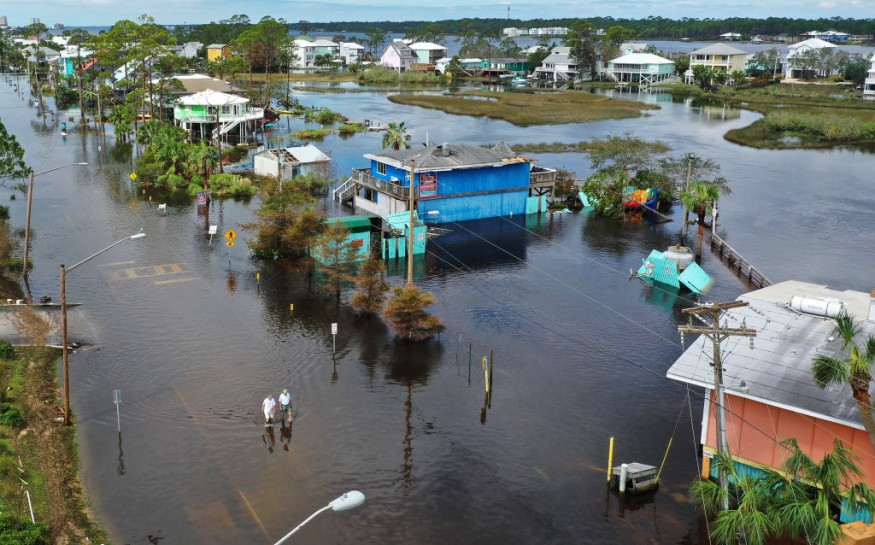Hurricane Teddy Intensifies as Category 4 Over Atlantic, Poses Potential Threat to US

Hurricane Teddy has strengthened to a Category 4 hurricane on Thursday as Tropical Depression 22 formed over the southwestern Gulf of Mexico.
Teddy's peak winds had increased 20 mph since the last advisory at 11 a.m, intensifying to a Category 4 hurricane with maximum sustained winds of 140 mph.
The National Hurricane Center (NHC) said that Teddy might strengthen tonight with its winds to peak 150 mph before likely fluctuations in intensity to the weekend.
The NHC did not issue any coastal watches or warning in effect, but large swells generated by Teddy are reaching the Lesser Antilles and the northeastern coast of South America.
The swells will spread westward to the Greater Antilles, the Bahamas, Bermuda, and the eastern coast of the U.S. by weekend.
Forecasters said there is some chance Teddy could strike Bermuda and then northern New England toward the middle of next week.
The gulf system could be a problem for Coastal Texas the northern Gulf Coast around the same time.
"While the exact details of Teddy's track and intensity near the island are not yet known, the risk of strong winds, storm surge, and heavy rainfall on Bermuda is increasing," the Hurricane Center noted.
Hurricane Sally
Meanwhile, Hurricane Sally unloaded 20 to 30 inches of rain, with winds over 100 mph, and generating a six-foot storm surge along the Florida Panhandle and Alabama coasts.
Rescuers on the Gulf Coast used boats and high-water vehicles on Thursday to reach people affected by floodwaters brought by Sally.
Homeowners across Alabama and Florida Panhandle started cleaning up. Officials inspected bridges and highways to safety.
Schools and universities were closed, many curfews were extended for days, and bridges were blocked by floodwaters.
In Florida's Santa Rosa County, at least 85 residents of an assisted living facility were being evacuated on Thursday due to the power outages, according to Florida Governor Ron DeSantis.
DeSantis did not name the facility but said that officials are taking precaution to curb the spread of COVID-19.
Officials noted that Pensacola in Florida lost approximately $8 million worth of the storm's damages. Areas of Interstate 10 were closed on Thursday in Panhandle because of rising waters.
While some rivers have spilled over their banks in both states, officials in Escambia County, Florida warned that multiple others were expected to crest Friday and in the coming days.
"Even as it (Sally) moves through states north of us, just remember that widespread river flooding is ongoing and it could continue over the next week in different parts of Florida," DeSantis said in a report.
Aside from Florida, other states still felt the remnants of Sally as it continued to push into Georgia, the Carolinas, and southern Virginia.
Forecasters warned about widespread flooding to the region, including a few tornadoes across the Eastern Carolinas.
The Alabama National Guard still had five high-water evacuation teams working in widely affected Baldwin County.
Sally has caused extensive flooding for miles as it dumped sheets of rain, including some places in two feet or more.
"We had 30 inches of rain in Pensacola -- 30-plus inches of rain -- which is four months of rain in four hours," Pensacola Fire Chief Ginny Cranor noted.
Check these out!
Air Pollution Contributes to Higher COVID-19 Deaths in Some States
La Niña Arrives in the Pacific: What Can Be Its Effects on Hurricanes and Wildfires
Oregon Wildfire: Boy With Dog on His Lap Found Dead Inside Car
Subscribe to Latin Post!
Sign up for our free newsletter for the Latest coverage!
© 2026 Latin Post. All rights reserved. Do not reproduce without permission.











